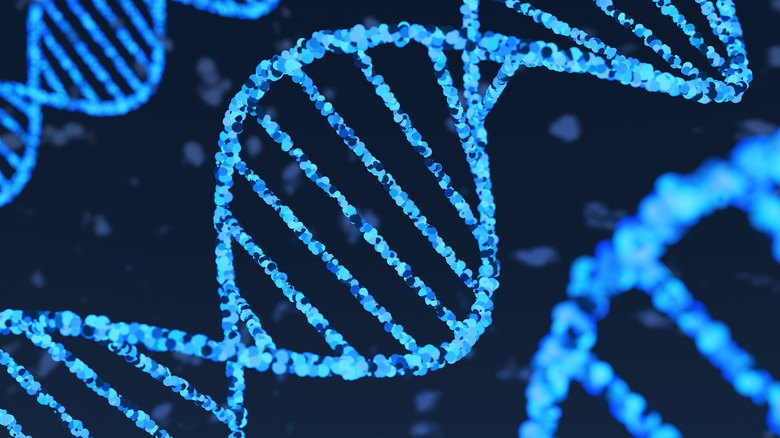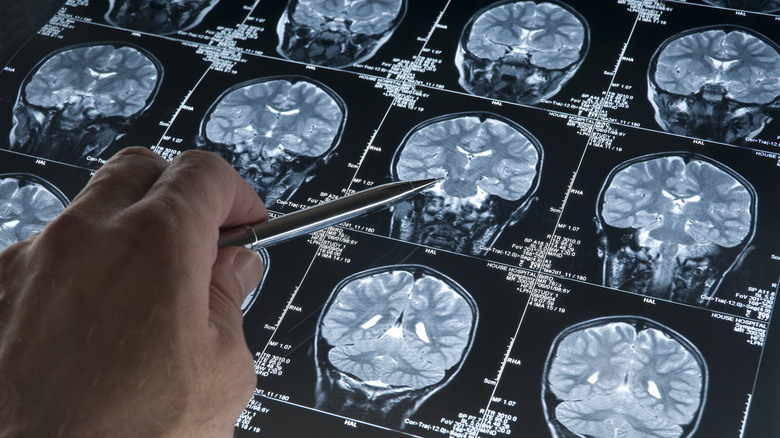Inbreeding Can Do More Damage To The Human Body Than You Knew
In the vast majority of world cultures, inbreeding — the birthing of children between two close family members — is a fundamental taboo. Indeed, the practice is discouraged in many major religions, with the rules of the Hebrew Bible prohibiting sexual contact between certain family members, such as siblings, in both Leviticus and Deuteronomy. But the truth is that incest and inbreeding have historically occurred throughout the world, and practiced in a manner that would be highly problematic for most societies today.
From the Pharaohs of Ancient Egypt to the aristocracy of Europe, powerful families, particularly monarchies, have used inbreeding to maintain power and wealth along family lines. Marriages between half-siblings were permitted in Ancient Athens and Sparta, while marriage between cousins was common in many periods. In a recent genetic study, it was found that around one in 3,600 Europeans born between 1938 and 1967 were born as a result of first- or second-degree inbreeding (per Discovery Magazine).
However, while such unions may serve to maintain sovereignty within a certain bloodline, history has shown the terrible physical effects of inbreeding as a practice, particularly when practiced for generations within the same small community. Here are the fundamental reasons that inbreeding is so dangerous for offspring, and some of the potential consequences.
A lack of gene diversity
The main reason that inbreeding is so dangerous is that it results in a lack of gene diversity. As with all animals, when human beings reproduce they inherit distinct sets of genes from either parent. In cases of inbreeding, in which parents carry many of the same genes already, there is a heightened risk of homozygosity, the inheritance of two sets of genes with the same characteristics. This means that recessive genes, such as those that geneticists believe are responsible for giving people blue eyes, are more likely to express themselves in the resulting offspring. However, so too are many diseases and medical conditions that impair quality of life, which are also often recessive.
Inbreeding often leads to "inbreeding depression," which means reduced "fitness" in the offspring, according to the National Library of Medicine. Such depression affects survival rates and also affects fertility, a consequence that has been observed across a wide range of animal species.
Wolcott-Rallison syndrome
One otherwise rare condition that becomes a much more common risk in cases of inbreeding is genetic diabetes, caused by a genetic disorder called Wolcott-Rallison Syndrome, which itself is the result of a gene mutation. The syndrome affects people from birth, leading to the emergence of permanent neonatal diabetes within the first few months of life that requires immediate medical treatment and management with insulin.
Wolcott-Rallison Syndrome has several other worrying symptoms, including skeletal deformations that only become evident as the baby grows. It can also cause the failure of bodily organs, such as the liver, kidneys, as well as the patient's bone marrow. According to a study published by the Orphanet Journal of Rare Diseases, the syndrome can often be fatal, with several of the examples of babies identified as having the disease dying within months of diagnosis. Among survivors, the syndrome can inhibit cognitive function and make bones brittle and more likely to fracture.
A wide range of medical conditions
Wolcott-Rallison Syndrome isn't the only potential consequence to affect offspring born through inbreeding. A study undertaken in France and published in 1977 found that sufferers of cystic fibrosis were more likely to have had parents who were blood relatives, such as cousins. Whereas 0.2% of the population of the country were the result of first-cousin intercourse, the figure was found to be 1.4% for those with cystic fibrosis.
Figures were even higher for spinal muscular atrophy (4.5%), albinism (5%), nephronophtisis (5.6%), cystinosis (7.1%), and achromatopsia (12.5%), according to the National Library of Medicine. Another study has revealed that inbreeding occurs at a greater rate among the parents of those suffering from schizophrenia, exacerbating the hereditary nature of the condition. Inbreeding has also been linked to several other debilitating conditions and disabilities, including reduced vision to the point of blindness, and deafness, which was discovered to have been the result of a limited gene pool over the course of 30 years in a the village of Dadhkai, in India.
The effects of inbreeding on royalty
There have been several real-life examples down the centuries of how selective inbreeding for the sake of maintaining sovereignty, power, and prestige has eventually come back to haunt the royal families that practiced it. Arguably the most famous Pharaoh of Ancient Egypt was Tutankhamun, whose tomb was first excavated in 1922. For many years, Egyptologists and scientists investigating the Pharaoh's mummified remains were attempting to uncover his cause of death.
Tutankhamun was only 17 years old when he died, and an apparent injury to the back of his head led to the emergence of several theories as to his cause of death, such as that he had fallen from his chariot or that he had been murdered by a usurper. But less well known is how sickly Tutankhamun was in life, the consequence of generations of inbreeding among his ancestors. Experts have discovered that the Pharaoh had a club foot and a malformed skull, the result of a bone disorder. "He was not a very strong pharaoh. He was not riding the chariots," geneticist Carsten Pusch told National Geographic, adding, "Inbreeding is not an advantage for biological or genetic fitness. Normally the health and immune system are reduced and malformations increase."
Similarly, the European Hapsburg dynasty that ended with the death of King Carlos II of Spain (pictured) in 1700 had, as a result of inbreeding, developed over the generations increasingly severe facial abnormalities, which came to be known as "the Hapsburg jaw," and mental disabilities.
Blue skin and 'birdlike' feet
As well as potentially leading to the emergence of many potentially life-threatening health conditions, offspring of inbreeding can face bizarre and unexpected abnormalities that affect their daily lives and change how they are perceived by the world around them. One example of this are the Fugate family of Kentucky, known as the "Blue Fugates." The Fugates settled in Hazard, Kentucky, in the early 19th century. The community was tiny, with little infrastructure to allow for a wide gene pool. In around 1920, a couple married who both carried the recessive gene for methemoglobinemia, a condition which causes blueness in the skin. Four of the couple's seven children had a blue skin tone, a rare quirk that continued among the children's descendants in the community due to inbreeding.
In Zimbabwe, the Vadoma tribe based in the southern valley of the Zambezi are known as the "Ostrich People," as they are often born with feet that resemble those of a bird. Research has found that this is a genetic mutation caused by inbreeding within the tribe: rather than bird feet, those who express the mutation are born with their middle three toes missing.





